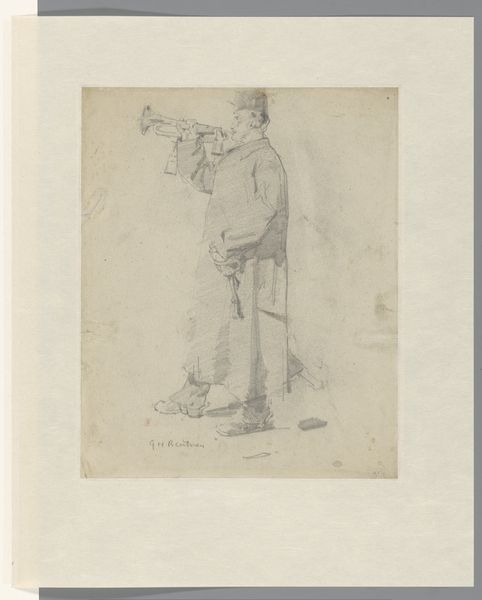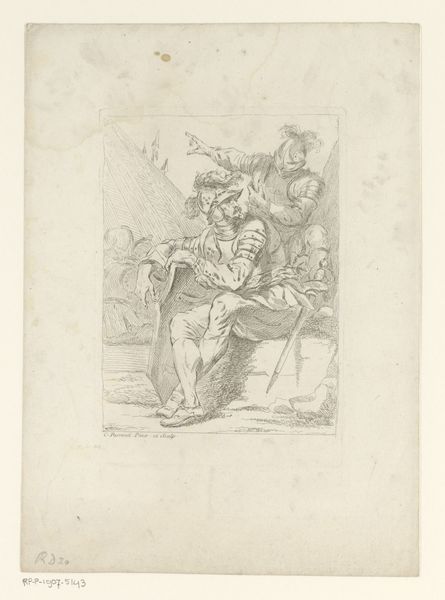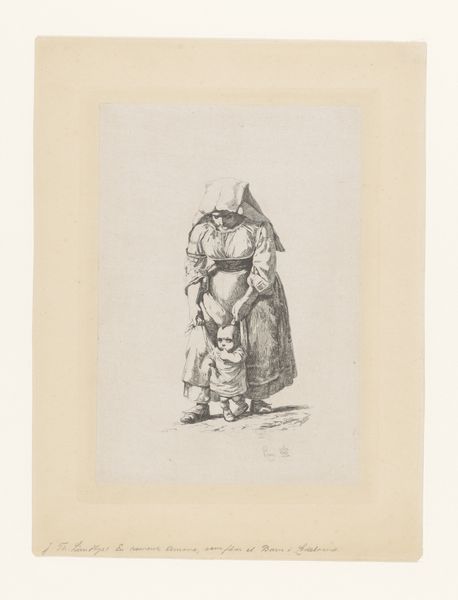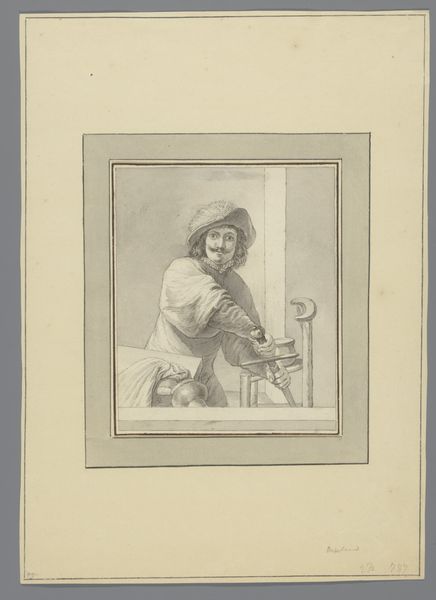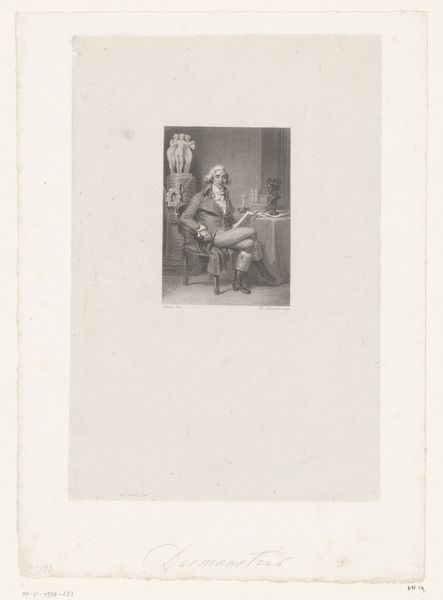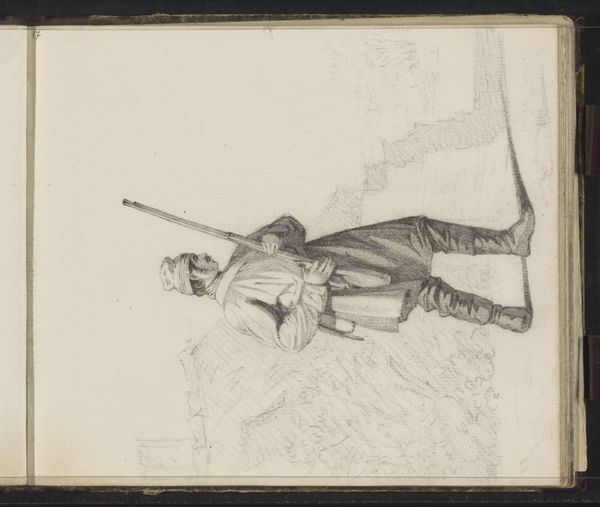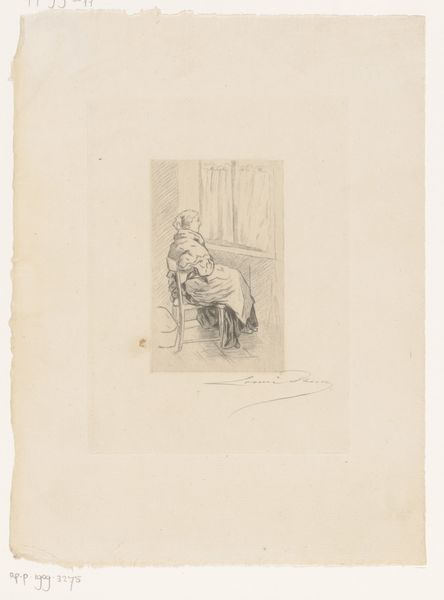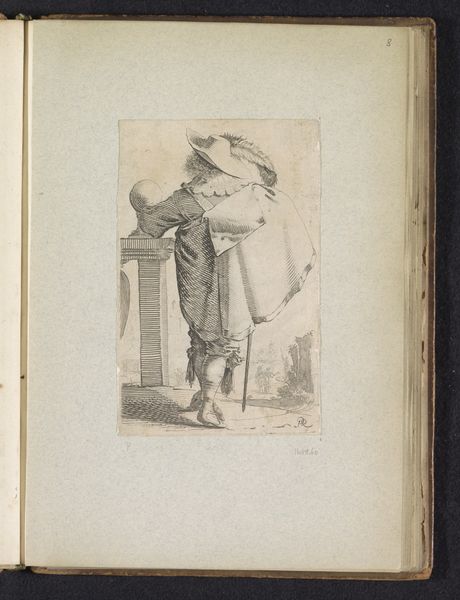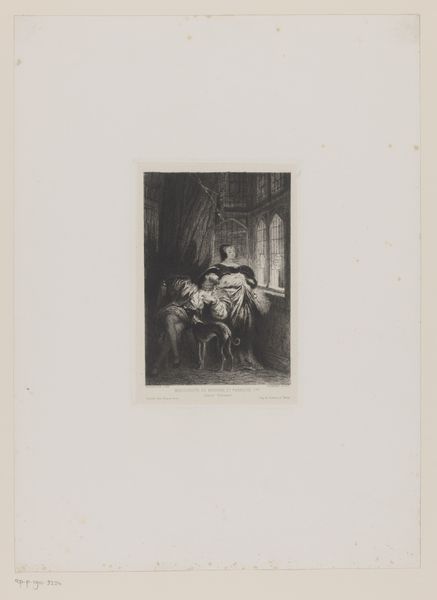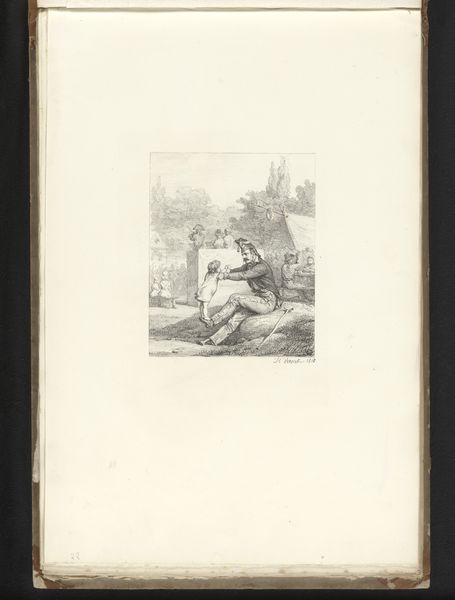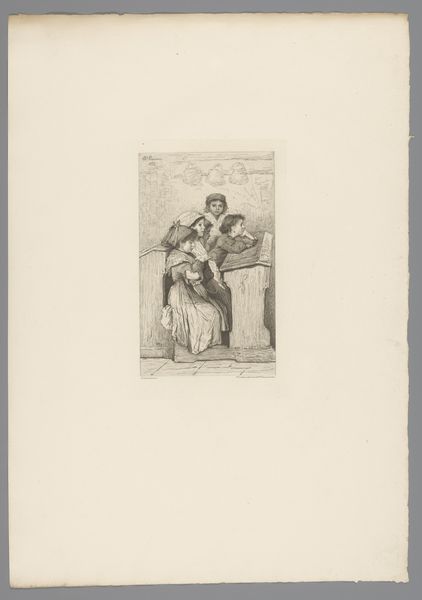
drawing, paper, ink, pen
#
portrait
#
drawing
#
dutch-golden-age
#
paper
#
ink
#
pen
#
genre-painting
Dimensions: height 168 mm, width 142 mm
Copyright: Rijks Museum: Open Domain
Curator: This is an intriguing Dutch Golden Age drawing housed here at the Rijksmuseum. Though the artist is anonymous, we know it dates from 1615 to 1688, rendered in pen and ink on paper, and the work is titled “Boer perst worstjes uit een varken”. Editor: My first impression is of its quiet, almost weary mood. The lone figure, presumably the farmer, seems less involved in a lively production scene than simply… waiting. The grey ink gives it such a calm atmosphere. Curator: Let's think about the physical act represented here. Sausage making wasn't a clean affair. What tools would they have been using? How readily available were materials such as saltpeter and other spices? The very act of preserving meat transforms readily decaying matter into a socially consumable product, and this transformation in early modern society was complex and deeply impactful. Editor: Absolutely, and if we examine his headdress, this conical hat adorned with what seems to be a snake, perhaps it’s an ouroboros or a dragon eating its own tail, it adds a layer of cyclical symbolism that’s interesting given you mentioned meat preservation. Is it possible it represents a never-ending cycle of life and death, or resource consumption? It hints at mortality even within this humble domestic scene. Curator: Good eye. I agree it may reference the temporal element linked to survival. Consider the economic pressures during the Golden Age that demanded methods of extending the utility of any harvested resources, particularly foodstuffs, which dictated many behaviors across all classes. This drawing serves as a material document of these social values, depicting labour's essential role in fulfilling those needs and desires. Editor: The positioning of the knife as well seems intentional. It stands upright like some silent guardian and symbol for the ability to change, create, destroy… again reinforcing a complex commentary on both the creation of a commodity and on what means were required to bring that commodity to a local market. Curator: These genre scenes were indeed essential records. While humble in scope, they document fundamental societal practices and attitudes toward labour, production, and perhaps most visibly, necessity. Editor: Ultimately it underscores how daily tasks also carry the heavy weight of ritual and meaning far beyond their seemingly simple purposes. Curator: Quite true. Editor: Yes.
Comments
No comments
Be the first to comment and join the conversation on the ultimate creative platform.
